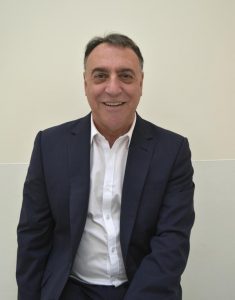
Sweating in greater amounts than required for thermoregulation, hyperhidrosis, may have significant emotional and social consequences for children.
Primary hyperhidrosis affects focal areas of the body and secondary hyperhidrosis affects the whole body. Children most commonly suffer from the primary form with the palms, feet and axillae typically involved. Affecting one percent of children, family studies indicate a genetic component. Primary hyperhidrosis ceases during sleep.
Secondary hyperhidrosis usually presents in adulthood and is associated with infections, malignancy, medications, or neurologic, endocrinologic, or metabolic disorders. It occurs during sleep.
Thyroid function tests, or other appropriate investigations, can be ordered if the sweating is possibly systemic. An abnormal result makes primary focal hyperhidrosis unlikely.
Treatment
Medical therapy, oxybutinin, given orally, may be recommended. It can be continued indefinitely but there are potential side effects such as insomnia, blurred vision, constipation and dry mouth. These can be reduced by starting on a low dose (e.g. 2.5-5.0 mg twice a day). Iontophoresis can be used to treat excessive sweating of the hands and feet, but can be time consuming. Focal hyperhidrosis of the axillae can be treated with strong anti-perspirants such as 20% aluminium chloride hexahydrate.
Surgical options are offered to children who refuse, or fail, or cannot tolerate, medical treatments. Thoracoscopic sympathectomy is a recommended treatment of hyperhidrosis of the hands. Surgery has been performed in children as young as six years. However, I recommend surgery after 10 years of age.
The operation is performed via two small incisions in each axilla and involves interrupting the thoracic sympathetic chain by cautery or clipping. Currently, only the third, plus or minus the second, thoracic levels are interrupted and the preference is for this to be done with small metal clips rather than cautery. The procedure takes approximately one hour. Both of the hands become dry immediately. For unknown reasons, the feet also become dry in a small percentage of patients.
The following day practically all patients are pain free. A side effect is compensatory sweating of the chest, back or thighs; the incidence has dropped to 5% and, because clips are used, if the compensatory sweating is intolerable, the clips can be removed, resulting in complete resolution or significant improvement in up to 90% of patients.
There is concern that lumbar sympathectomy to treat sweaty feet, after thoracoscopic sympathectomy has been performed, can lead to unacceptably high rates of compensatory sweating. Surgical treatment of excessive sweating of the armpits is best performed in adolescents and adults and currently microwave thermolysis gives excellent results with minimum side effects. Botox injections of the axillae offer temporary resolution of the problem.
Author competing interests: nil relevant disclosures. Questions? Contact the editor.
Key Points
- Hyperidrosis can have significant emotional and social consequences in children.
- Medical and surgical treatments are available.
- The incidence of compensatory sweating has decreased owing to more selective surgery.
Disclaimer: Please note, this website is not a substitute for independent professional advice. Nothing contained in this website is intended to be used as medical advice and it is not intended to be used to diagnose, treat, cure or prevent any disease, nor should it be used for therapeutic purposes or as a substitute for your own health professional’s advice. Opinions expressed at this website do not necessarily reflect those of Medical Forum magazine. Medical Forum makes no warranties about any of the content of this website, nor any representations or undertakings about any content of any other website referred to, or accessible, through this website.

